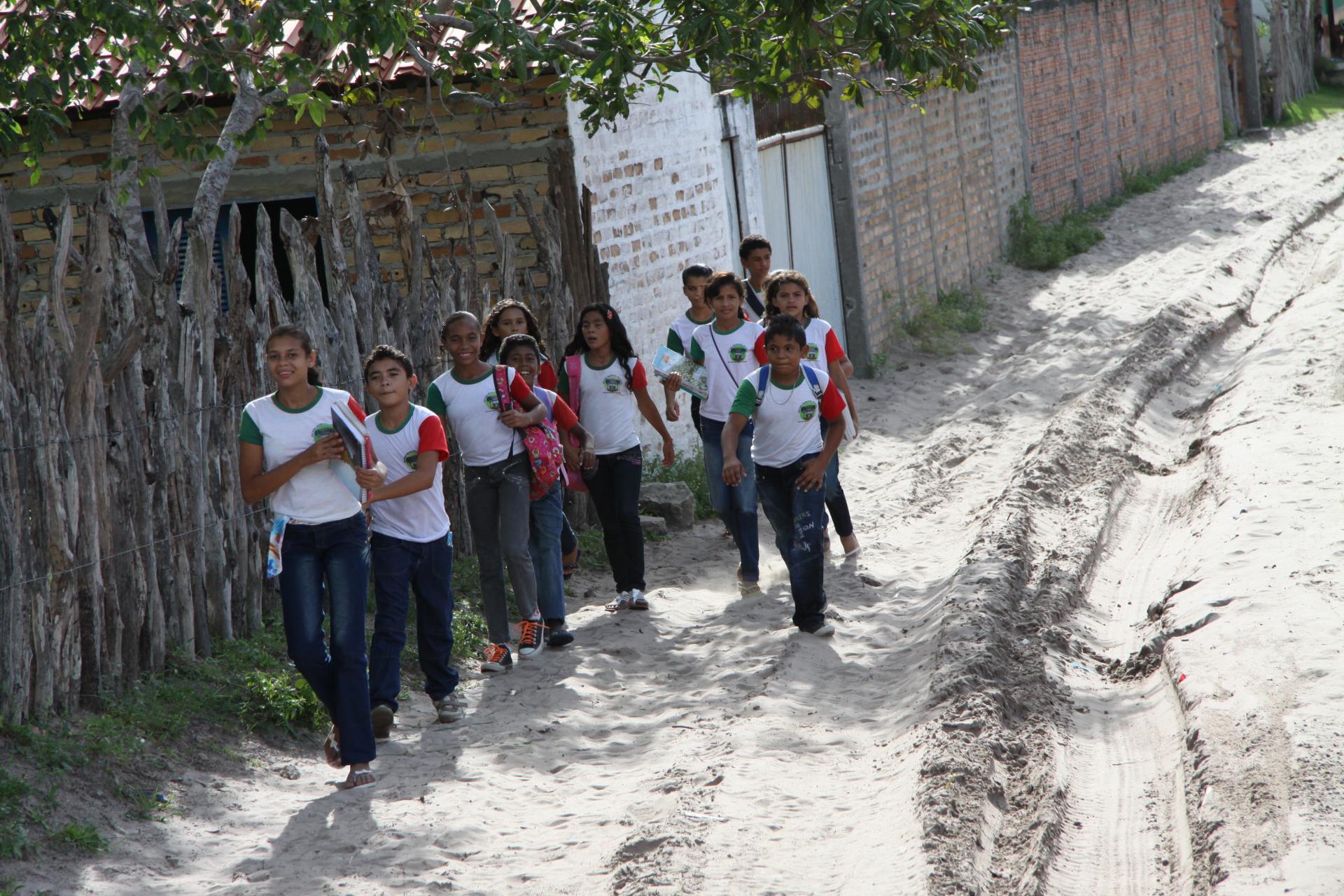The Brazilian Education System

On your trip to Brazil, you will undoubtedly pass some Brazilian schools. Did you know that the Brazilian school system differs from the American in some ways? You can divide it into two levels. After educação infantil, or early childhood education, educação básica, the basic education, begins. Since 2006, basic education in Brazil takes an overall period of twelve years. Moreover, Brazil distinguishes between classes, séries, and grades, anos.
In the following, we will take a closer look at some of the different educational paths.
Primary education – Educação básica/ensino fundamental
Educação básica is divided into different levels as well. The first five years of schooling constitute the first level, and the second level, consequently, consists of years six to nine. These two levels represent the primary education, ensino fundamental. Here, the focus is exclusively on general education.
Secondary education – Ensino médio
Secondary education, ensino médio, follows primary education. At this level, the counting of classes starts all over again. For example, the Brazilian classes 10 to 12 are called first, second, and third séries do ensino médio. This can be confusing for foreigners. After ensino médio, students receive one of three different diplomas:
- Ensino médio de formação geral, the regular, general secondary education.
- Ensino médio técnico, the secondary education including vocational training.
- Ensino médio na educação de jovens e adultos, the secondary education.
After one of these degrees, the compulsory part of schooling ends.
ENEM and ENCCEJA
Furthermore, in the last year of secondary education, students are obligated to take part in the exam ENEM. ENEM stands for exame nacional do ensino médio. This means “national secondary school-leaving exam”. ENEM is particularly relevant because it is considered the entrance examination in order to enroll at a federal university, a universidade federal. If one aims to attend a private university, this certificate is not required.
ENCCEJA, the “exam to prove competencies of adolescents and adults”, can also be taken by students from foreign countries.
School names
Furthermore, you spot a difference in the names of some secondary schools.
Schools that offer only secondary education are called colégio or escola de ensino médio (E.E.M.).
On the other hand, escola de ensinos fundamental e médio (E.E.F.M.) is the name given to schools that offer both secondary and primary education.
Private secondary schools sometimes also give intensive courses in preparation for the university entrance exam. Such schools are called colégio e curso preparatório.
The difference between colégio and escola is not apparent, especially in older schools.
Vocational education
In Brazil, it is also possible to obtain formação profissional, or vocational training, independent of secondary education. This training often teaches skills for industrial, commercial, or agricultural sectors. Training institutes work in close cooperation with the business community and are private-law institutions of public interest. In the state of São Paulo, higher education is additionally offered in more specific fields such as architecture, business administration, hotel management, and gastronomy.
Brazilian degrees
When former students apply to a university, they often have to go through a selection procedure and again a more specific entrance examination. In this exam, the subjects are weighted differently, depending on the targeted degree program. In addition, state universities use the results of the ENEM as the main criterion in the selection process.
Although many use the colloquial term faculdade to talk about a university, the official term is instituição de ensino superior (IES). Furthermore, a distinction is made between:
- Universidades federais, federal universities, e.g. Universidade Federal do Rio de Janeiro (UFRJ).
- Universidades estaduais, state-run universities, e.g. Universidade de São Paulo (USP).
- Pontifícias universidades católicas, the pontifical Catholic universities, e.g. Pontifícia Universidade Católica do Rio Grande do Sul (PUCRS).
- Centros universitários, higher education institutions, e.g. Centro Universitário Una in the state of Minas Gerais.
Undergraduate studies
When students get their degree, they receive one of the following three university degrees:
- Bacharel, a bachelor's degree, which is usually science-oriented.
- Licenciado, a degree only for courses with a teaching qualification.
- Tecnólogo, a degree for academically trained professionals, which is only for professionally oriented short courses.
The standard period of study is usually four years. Another difference from America is that students in Brazil usually have to take the exam ENADE twice. The exame nacional de desempenho de estudantes is a national exam used to evaluate degree programs. In different fields of study, exams are taken approximately every three years. If the ENADE is not taken, the degree certificate won’t be approved.
Postgraduate studies
After all these studies, a master’s degree program and later a doctoral degree program can be completed in Brazil as well. Being awarded with a diploma de doutorado, a doctoral degree certificate, the highest level of the Brazilian educational system is reached.
On your vacation in Brazil, you probably explicitly want to get away from work, school, or studies. However, it is also quite interesting to know how the educational system in Brazil works. Who knows, you might even like the country so much that you decide to study in South America or encourage your child to do so.
Sources: www.brasilianischebotschaft.de, www.kinderweltreisen.de, www.linguabrasilis.de, www.wikipedia.org

